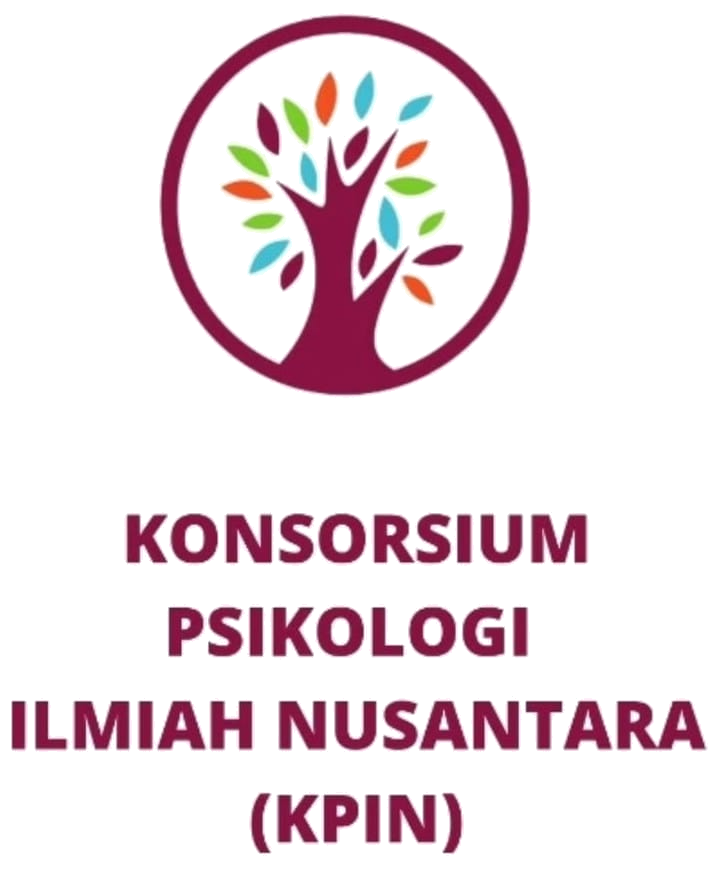Work Life Balance dan Keterikatan dengan Pekerjaan pada Pekerja Wanita yang Menikah
DOI:
https://doi.org/10.35814/mindset.v15i02.6549Keywords:
employee engagement, marriage female workers, work life balanceAbstract
This research aims to understand the relationship between work life balance and employee engagement among married female workers, therefore a quantitative approach is used. The purposive sampling method was used to select respondents as many as 150 married female workers in Bontang City, East Kalimantan. Data were analyzed using the Pearson Product Moment correlation test. This research shows a relationship between work life balance and employee engagement in the medium category, which means that the higher the work life balance applied, the higher the employee attachment to married female workers in Bontang City. The implications of this research are to become a basis for helping create a more inclusive, supportive and sustainable work environment for agencies and married female workers in Bontang City.
References
Adi, A. N., & Fithriana, N. (2018). Employee engagement (pada sektor bisnis dan publik). CV. IRDH (Reseach & Publish-ing.
Aghaei, N., & Savari, M. (2014). The relationship between psychological empowerment and professional commitment of selected physical education teachers in Khuzestan province, Iran. European Journal of Experimental Biology, 4(4), 147–155.
Anggraini, S. W., & Mulyana, O. (2022). Hubungan antara tuntutan kerja dengan keterikatan kerja pada karyawan tetap PT. X. Character: Jurnal Penelitian Psikologi Peningkatan, 9(7).
Ayu, D. R., Maarif, S., & Sukmawati, A. (2015). Pengaruh job demands, job resources, dan personal resources terhadap work engagement. Jurnal Aplikasi Bisnis Dan Manajemen, 1(1), 12–22. https://doi.org/10.17358/jabm.1.1.12
Badan Pusat Statistika. (2022). Persentase tenaga kerja formal menurut jenis kelamin 2020-2022. BPS. https://www.bps.go.id/indicator/6/1170/1/persentase-tenaga-kerja-formal-menurut-jenis-kelamin.html
Badan Pusat Statistik Kota Bontang. (2023). Kota Bontang dalam angka 2023. https://bontangkota.bps.go.id/publication.html
Badan Pusat Statistik Kota Bontang. (2024, 8 Mei). Persentase perempuan sebagai tenaga profesional (persen), 2023. https://bontangkota.bps.go.id/id/statistics-table/2/NDgzIzI=/persentase-perempuan-sebagai-tenaga-profesional.html
Bataineh, K. A. (2019). Impact of work-life balance, happiness at Work, on employee performance. International Business Research, 12(2), 99. https://doi.org/10.5539/ibr.v12n2p99
Cahyana, K. S., & Prahara, S. A. (2020). Work engagement dengan intensi turnover pada karyawan. Intuisi : Jurnal Psikologi Ilmiah, 12(3), 285–294. https://doi.org/10.15294/intuisi.v12i3.24073
Databooks. (2022). Mayoritas perempuan Indonesia bekerja sebagai tenaga penjualan. Katadata.co.id. https://databoks.katadata.co.id/datapublish/2022/04/09/mayoritas-perempuan-indonesia-bekerja-sebagai-tenaga-penjualan
De Kort, M., & Poell, R. F. (2016). The relationship between work-life balance, work engagement and participation in employee development activities: A moderated mediation model. Tilburg University, 1(1), 1-87.
Duxbury, L. E., & Higgins, C. A. (1991). Gender differences in work-family conflict. Journal of Applied Psychology, 76(1). https://doi.org/https://doi.org/10.1037/0021- 9010.76.1.60
Fauzia, N. K., & Marwansyah. (2020). Pengaruh employee engagement terhadap turnover intention studi kasus PT XYZ Bandung. Jurnal Riset Bisnis Dan Investasi, 6(1), 33–42. https://doi.org/10.35313/jrbi.v6i1.1873
Fisher, G. G., Bulger, C. A., & Smith, C. S. (2009). Beyond work and family: A measure of work/nonwork interference and enhancement. Journal of Occupational Health Psychology, 14(4), 441–456. https://doi.org/10.1037/a0016737
Gächter, M., Savage, D. A., & Torgler, B. (2013). Retaining the thin blue line: What shapes workers’ intentions not to quit the current work environment. International Journal of Social Economics, 40(5). 479-503. https://doi.org/10.1108/03068291311315359
Gallup. (2016). How millenial want to work and live:The six bis changes leader have to make. Gallup inc.
Gunawan, I. (2013). Metode penelitian kualitatif: Teori dan praktik. Bumi Aksara.
Guzeller, C. O., & Celiker, N. (2020). Examining the relationship between organizational commitment and turnover intention via a meta-analysis. International Journal of Culture, Tourism, and Hospitality Research, 14(1), 102–120. https://doi.org/10.1108/IJCTHR-05-2019-0094
Harnoto. (2002). Manajemen sumber daya manusia. Prehallindo.
Kusumawati, E., Sofiah, D., & Prasetyo, Y. (2021). Keterikatan kerja dan tingkat turnover intention pada karyawan generasi milenial dan generasi Z. Universitas, 2(02), 100–111. https://jurnal.untag-sby.ac.id/index.php/sukma/article/view/5994
Laksono, B. F. W., & Wardoyo, P. (2019). Pengaruh work–life balance, kepuasan kerja, dan work engagement terhadap turnover intentions dengan mentoring sebagai variabel moderating pada karyawan Hotel Dafam Semarang. Jurnal Riset Ekonomi dan Bisnis, 12(1), 17. https://doi.org/10.26623/jreb.v12i1.1525
Larasati, D. P., Hasanati, N., & Istiqomah. (2019). The effects of work-life balance towards employee engagement in millennial generation. 4th ASEAN Conference on Psychology, Counselling, and Humanities (ACPCH 2018). https://doi.org/https://doi.org/10.2991/acpch-18.2019.93
Macey, W. H., & Schneider, B. (2008). The meaning of employee engagement. Industrial and Organizational Psychology: Perspectives on Science and Practice, 1(1), 3–30. https://doi.org/https://psycnet.apa.org/doi/10.1111/j.1754-9434.2007.0002.x
Madyaratri, M. M., & Izzati, U. A. (2021). Perbedaan work engagement ditinjau dari masa kerja pada karyawan bagian produksi. Jurnal Penelitian Psikologi, 8(3), 24–35.
Mariyanti, S., Lunanta, L. P., & Ratnaningtyas, A. (2023). Model work life balance dalam peningkatan employee engagement pada perempuan bekerja yang menjalani peran ganda. Psychophedia Jurnal Psikologi Universitas Buana Perjuangan Karawang, 7(2), 76–90.
Mohd, I. H., Mohd Shah, M., & Zailan, N. S. Z. (2016). How work environment affects the employee engagement in a telecommunication company. 418–426. https://doi.org/10.15405/epsbs.2016.11.02.37
Nafiudin, N. (2017). Measuring the differences of work-life balance and employee engagement in Y-generation employees in Cikande Modern Serang Banten area and regional area of Cikupa Mas Tangerang Banten. Sains: Jurnal Manajemen dan Bisnis, 11(1). https://doi.org/10.35448/jmb.v11i1.4321
Ningsih, S., & Dukalang, H. (2019). Penerapan metode suksesif interval pada analisis regresi linier berganda. Jambura Journal of Mathematics, 1(1), 43–53. https://doi.org/10.34312/jjom.v1i1.1742
Poerwanto, Sisbintari, I., & Suhartono. (2013). Transformasi organisasi : Basis peningkatan sumber daya manusia dalam memperkuat daya saing. Jurnal Al-Azhar Indonesia Seri Pranata Sosial, 2(2), 119–132.
Prasadjaningsih, M. O., & Oktavia, V. S. (2021). Pengaruh work life balance terhadap employee engagement karyawan pensiun bank mandiri dan legacy serta rekanan. Perbanas Institute, 1–10.
Pratiwi, I. W. (2020). Work life balanced pada wanita karier yang telah berkeluarga. Jurnal Psikologi Pendidikan dan Pengembangan SDM, 10(1), 72-89.
Pri, R., & Zamralita, Z. (2017). Gambaran work engagement pada karyawan di PT EG (Manufacturing Industry). Jurnal Muara Ilmu Sosial, Humaniora, dan Seni, 1(2), 295. https://doi.org/10.24912/jmishumsen.v1i2.981
Rahmah, D. N., & Fahmie, A. (2019). Strategi regulasi emosi kognitif dan stress kerja petugas kebersihan jalan raya wanita. Psikostudia: Jurnal Psikologi, 8(2), 88–98.
Rahmayati, T. E., Sariyanto, S., & Adriansyah, T. (2022). Pengaruh work-life balance terhadap work engagement pada dosen wanita dalam menghadapi dunia pendidikan di era digital. Journal of Education, Humaniora and Social Sciences (JEHSS), 5(2), 1448–1456. https://doi.org/10.34007/jehss.v5i2.1486
Rainer, P. (2024, Mei 21).Februari 2024, angkatan kerja perempuan meningkat. Goodstats.id. https://data.goodstats.id/statistic/februari-2024-angkatan-kerja-perempuan-meningkat-cpeoL
Ratnasari, S. D., Widitama, M. R., & Sunarto. (2023). Employee engagement memediasi Pengaruh work life balance dan kepuasan kerja terhadap intention to leave. Ekonika : Jurnal Ekonomi Universitas Kadiri, 8(1), 101–118. https://doi.org/10.30737/ekonika.v8i1.3460
Rebecca, R., Sarinah, S., & Putra, A. I. D. (2020). Hubungan antara work life balance dengan employee engagement Pada Bank Sinarmas KC Medan. Jurnal Penelitian Pendidikan, Psikologi Dan Kesehatan (J-P3K), 1(1), 44–49.
Robbins, S. P., & Judge, T. A. (2015). Perilaku organisasi (Bahasa Indonesia ed.). Salemba Empat.
Schabracq, M. J., Winnubst, J. A. M., & Cooper, C. L. (2003). The handbook of work and health psychology. John Wiley & Sons Ltd. http://www.al-edu.com/wp-content/uploads/2014/05/Handbook-of-Work-and-Health-Psychology-2Ed-2003.pdf.%0A%0A
Shuck, B., Adelson, J. L., & Reio Jr, T. G. (2017). The employee engagement scale: Initial evidence for construct validity and implications for theory and practice. Human Resource Management, 56(6), 953-977. https://doi.org/10.1002/hrm
Soeharso, S. Y., & Nurika, R. (2020). Pengaruh budaya organisasi terhadap employee engagement dengan work ethic (hard work) sebagai variabel moderator: studi kasus pada karyawan generasi milenial di PT X. Mind Set, 11(1), 46–54.
Thania, I., Pritasari, S. P., Theresia, V., Suryaputra, A. F., & Yosua, I. (2021). Stres akibat konflik peran ganda dan coping stress pada ibu yang bekerja dari rumah selama pandemi. Jurnal Ilmiah Psikologi MIND SET, 1(01), 25-50.
Wicaksono, B. D., & Rahmawati, S. (2020). Pengaruh employee engagement terhadap kinerja karyawan direktorat sistem informasi dan transformasi digital institut pertanian Bogor. Jurnal Manajemen dan Organisasi, 10(2), 133–146. https://doi.org/10.29244/jmo.v10i2.30132
Wijayanto, P., Suharti, L., & Chaniago, R. (2022). Pengaruh work life balance terhadap employee engagement dan dampaknya terhadap turnover intention dengan job characteristics sebagai pemoderasi (Studi pada karyawan generasi Y di Indonesia). Jurnal Ekonomi Pendidikan dan Kewirausahaan, 10(1), 83–98. https://doi.org/10.26740/jepk.v10n1.p83-98
Yani, E., Lestari, A. F., Amalia, H., & Puspita, A. (2018). Pengaruh internet banking terhadap minat nasabah dalam bertransaksi dengan technology acceptance model. Jurnal Informatika, 5(1), 34–42. https://doi.org/10.31311/ji.v5i1.2717












